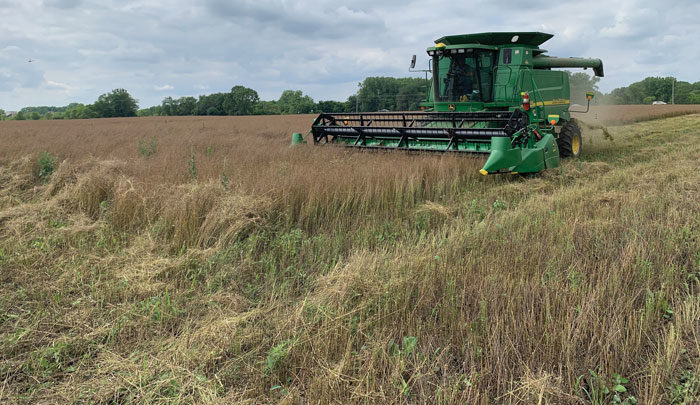No-Till Farmer
Get full access NOW to the most comprehensive, powerful and easy-to-use online resource for no-tillage practices. Just one good idea will pay for your subscription hundreds of times over.

GOING TO SEED. The University of Minnesota is working on altering the genetics of winter camelina to make it mature earlier, which will allow the crop to be harvested earlier in a double- or relay-crop rotation with soybeans.
NO-TILLERS ACROSS the country are increasingly turning to cover crops to exploit off-growing-season sunlight and rain to reduce erosion, improve soil health, sequester residual nutrients and combat weeds. The short season and cold winters in the upper Midwest, however, have left growers there with very limited fall-planted cover options.
Of all the cover crops, cereal rye is generally the most reliable plant for upper Midwesterners, as it survives the winter. It’s often planted behind corn or soybeans in the fall, but may present management challenges for termination and soil moisture during spring planting season.
That situation, affecting about 2 million acres in Minnesota, northern Iowa and North and South Dakota, may be changing soon because of the work of a multi-disciplinary team in the University of Minnesota’s “Forever Green” program (www.forevergreen.umn.edu). Its 6-year winter camelina research and breeding program is showing the drought- and winter-hardy oilseed crop can fit in well as a winter cover used ahead of a double- or relay-crop with soybeans on well-drained, loamy fields.
The Forever Green initiative is a university and USDA multidisciplinary emphasis on developing alternative crops for growers in the upper Midwest with an aim toward protecting soil and water resources along with adding economic value.
Samantha Wells, associate professor of agronomy and plant genetics at the University of Minnesota, has been working with field studies of the winter brassica throughout the program and says camelina grown as a relay- or double-crop with soybeans in a corn-soybean rotation…